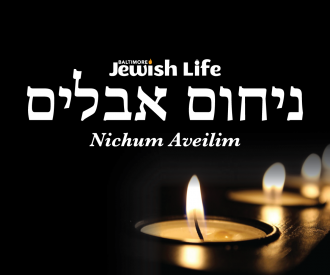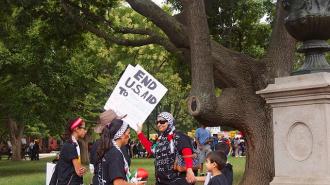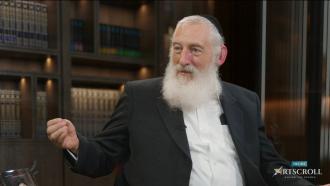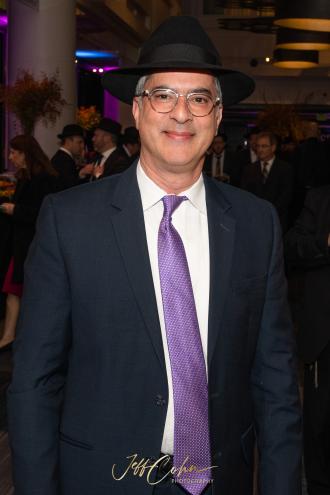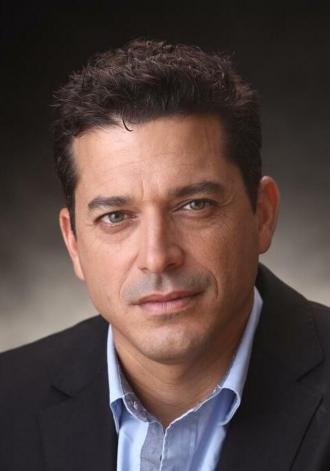Parashas Shoftim contains a passage which was important in my religious development.
My parents had maintained conservative synagogue affiliation. When I was 17, I left my traditional, but non-Orthodox, home for Baltimore’s Johns Hopkins University with the explicit intent to “become more religious.” Intentionally, I had applied only to colleges in cities with large Jewish populations: Baltimore, Philadelphia, New York, and Cleveland. However, without an Orthodox upbringing, I did not understand what being “more religious” meant. I knew that the religious people were those who had sedarim on Pesach, lit Shabbos candles, lit Chanuka candles, had a sukka, etc. However, I did not know whether these observances were essential or extraneous, necessary or unnecessary. I hoped to determine which stream of Judaism, Orthodoxy, Conservatism, or Reform, could lead me to G-d’s Torah truths. Each of these three Jewish methodologies of understanding the Torah and keeping the commandments promised to “deliver the goods” of Torah truth, but two of the three had to be wrong.
I knew from Jewish history that the original Judaism was Orthodoxy. Reform had started in Germany in the early part of the 19th century, and Conservatism had started in Germany and the United States at the end of the 19th century. I knew that until the 19th century all the Jews aside from the Karaites, Sadducees, etc., had been standard, normative, Pharisee Orthodox, going back all the way to Moses.
Obviously, Jews asked many questions in the 19th century which dealt with the legitimacy of deviations from Orthodox practice. Do the laws of kashrus still apply? Is it permitted to have an organ played in the synagogue on Shabbos? Does a Jewish divorce require a get? Is it permitted for a kohain to marry a grusha (divorcee)? May men and women sit “mixed” in a synagogue during prayer services? May the Sabbath be observed on Sunday in order to avoid interference with Saturday’s commerce?
I made the assumption that the Torah is true and authentic. My parents’ congregation presented me with the 1917 JPS translation of the Tanach, but that book was not sufficient. I brought the single most important Jewish book I owned with me to Johns Hopkins. It was, The Pentateuch by Rabbi J.H. Hertz, Chief Rabbi of England. In my attempt to become “more religious,” I resolved to read the parasha every Shabbos with his commentary.
Parashas Shoftim occurred early in the fall semester. It begins (Devarim 16:18),
“Shofteem v’shotreem tee-ten lecha (Judges and enforcers you shall have …”
A few pesukim later (17:8), I read,
“Kee yee-palay meemcha davar la-mishpat, bein dam l’dam, bein deen l’deen, oo-vayn nega l’nega, divrei rivos beesharecha, v’kamta v’alee-sa el hamakom asher yivchar Hashem elokecha bo. Oo-va-sa el hakohanim hal’vi-im v’el hashofayt asher yi-heeyeh bayameem hahaym, v’darashta v’heegeedo lecha ays dvar hamishpat. V’a-see-sa al pee hadavar asher yageedoo lecha es dvar hamishpat. V’a-see-sa al pee hadavar asher yageedoo lecha meen hamakom hahoo asher yeevchar Hashem v’shamarta la-asos k’chol asher yoroocha. Al pee haTorah asher yoroocha v’al hamishpat asher yomroo lecha ta-a-seh lo sasoor meen hadavar asher yageedoo lecha yameen oo-s’mol.”
(When there will arise among you a legal issue regarding blood, monetary claims, or skin lesions, matters of controversy within your gates, you shall arise and go up to the place which Hashem, your G-d has chosen and go to the priests, the Levites, and the judge who will be in those days. And you will ask, and they will answer you regarding the question of law. And you shall do according to the ruling which they will tell you from that place that Hashem will choose. And be careful in everything that they will teach you and regarding the ruling that they say to you, you must do. You may not turn from the verdict which they will say to you either to the right or left.)
I stopped. That was it! I knew immediately that the Orthodox approach to and understanding of our Holy Torah was the correct way.
My proof of the truth of Orthodoxy and the falsehood of Conservatism and Reform.
I perceived in this passage a proof of the truth of Orthodoxy and the falsity of Conservatism and Reform.
How does a law code provide for the resolution of legal problems which the authors of the code do not anticipate when they write the code? The framers of the United States Constitution anticipated that new legal issues would arise as the decades passed. They vested the legal authority for those issues in the states. Hence, they wrote the Reserve Clause - all powers not constitutionally assigned to the federal government are reserved for the states, and the Elastic Clause - Congress shall have the authority to enact all laws necessary to execute the powers of the federal government.
I related this “Kee yee-palay …” passage to the Reserve and Elastic Clauses of the Constitution,
The passage, “Kee yee-palay …,” reveals that Hashem anticipated that the Jewish people would have questions regarding Torah observance. In this passage, the Torah provides a methodology for resolving all doubts and questions - if a Jew has a question, he must seek the answer from the sages of his generation, and those religious authorities will render a decision which we Jews would have to obey. Ironically, because I had learned about the United States Constitution before I had studied Chumash, I heard echoes of the Reserve Clause and the Elastic Clause in this passage. Had I attended a yeshiva high school, perhaps I would have heard echoes of the passage in the Constitution’s Reserve and Elastic Clauses.
I reasoned that G-d could not have put the laws governing refrigerators, Shabbos clocks, corporations, automobiles, etc. into His Written Torah 3000 years ago because our ancestors would not have understood such concepts. In “Kee yee-palay …,” I saw an “elastic clause,” a Torah mechanism to determine Torah rulings as new issues “… divrei rivos besharecha …” arose.
In the 19th century, when Jews asked the questions presented above, all the sages were Orthodox. There were no Reform sages or Conservative sages. If one asks an Orthodox sage to decide a question in Jewish Law, by definition, he will respond with an Orthodox answer. Therefore, the 19th century Jewish “truth-seekers” either a) did not ask the (Orthodox) sages their shaylohs regarding changes in Orthodox practice, or b) asked the (Orthodox) sages and did not obey their rulings.
Either scenario, a) or b), would have involved a Torah violation. I did not know which of these two Torah violations (not asking or not obeying) the Reform and Conservative leaders had committed. However, I was certain that they had committed one of them.
These Jewish deviators were able to develop a Judaism which deviated from Orthodox practice by violating the constitution of the Jewish people – Hashem’s Holy Torah. My conclusion followed immediately. Both Reform and Conservatism were illegitimate and Orthodoxy represented G-d’s truth as manifested in the Torah. Orthodoxy was the only legitimate way to understand Hashem’s Torah. I reflected, now Bert Miller, go and learn.
Later, I created a statistical proof of the personal dishonesty of the Reformers and Conservatives. Incontrovertibly, leaders of the Reform and Conservative movements had introduced changes into Jewish practice and each change was in the direction of leniency. If these leaders had had legitimate, honest disagreements with Orthodox practice, then certainly many, perhaps half, of their proposed changes would be towards stringency. Since all of their changes were in one direction (leniency), then their “seeking of the truth” could not be honest. It had to be that their “efforts at change” were motivated by the dishonest intent to make the Jewish religion less demanding regardless of what Hashem wanted, not to seek the truth whatever it would be. Contrast that approach with the apparent honesty of the (misguided) Karaites. There are aspects of Karaite practice which are more stringent than Orthodox practice.
By my sophomore year, I was spending every Shabbos at Ner Israel. I had joined the “Torah team.”

